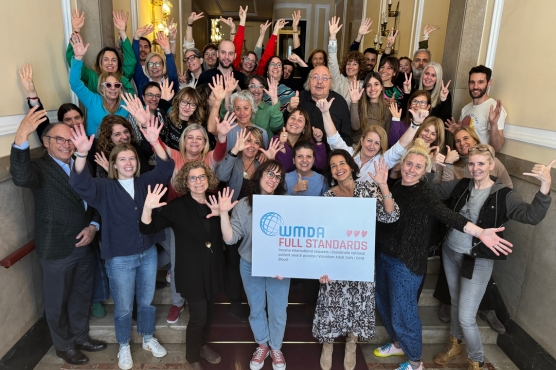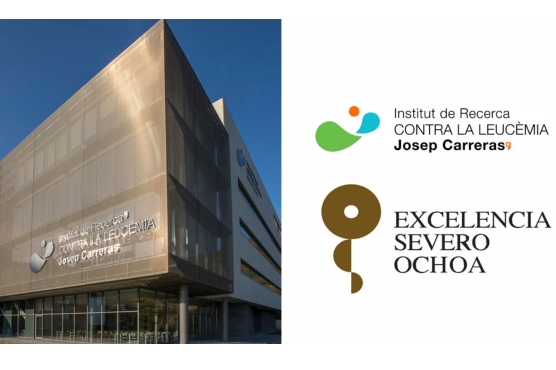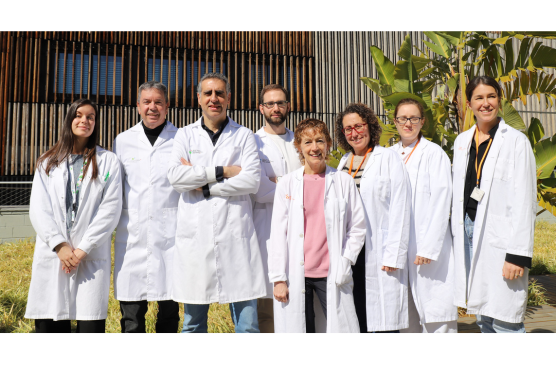Researchers of the Josep Carreras Leukaemia Research Institute and the Spanish National Cancer Research Center (CNIO) have succeeded in recreating the key genetic alterations of a particularly complicated subtype of childhood Acute Lymphoblastic Leukemia in human cells. The new model, created using gene-editing techniques, progresses in an extremely similar way to what occurs in children, often newborns. The model will help to better understand B-cell leukemias with MLL::AF4 fusions, which are found in 80% of the cases of infant leukemias and are associated with a poor prognosis.
B-cell Acute Lymphoblastic Leukemia (B-ALL) is one of the most frequent pediatric cancers. Although its survival rate is, in general terms, higher than 80%, some of B-ALL subtypes have a poor prognosis and are still far from these figures. This is the case of B-ALL harboring the fusion between the MLL and AF4 genes, whose survival rate is less than 40%, and for which there was not yet a reliable model that would allow researchers to thoroughly study them.
A scientific team, led by Dr. Pablo Menéndez, of the Josep Carreras Leukaemia Research Institute, a CERCA center of the Catalan Government, has just presented the first cellular model capable of behaving as the disease does in patients. The study, led by Dr. Clara Bueno, of the Josep Carreras Institute, and Dr. Raúl Torres-Ruiz, of the Spanish National Cancer Research Center (CNIO), has been published in the peer-reviewed journal Blood, the leading international reference in the field of hematology. The model has been created by genetically editing both fetal and neonatal cells, provided by the Barcelona Blood and Tissue Bank and the MRC/Wellcome Trust Centre (UK). The CRISPR-Cas9 tool, one of the latest revolutions in the field of molecular biology, has been used for editing the cells
Gene fusions are able to produce fused proteins, sometimes with novel and unexpected functions. The MLL::AF4 fusion in childhood B-ALL occurs during fetal development and involves DNA exchange between chromosomes 4 and 11. The resulting protein is capable of activating a set of cellular mechanisms, both genetic and epigenetic, that lead to leukemic transformation of the cell in a period of time that can be very short, depending on the DNA fragments involved in the new fusion gene.
In this regard, it is known that there are several subtypes of B-ALL with MLL::AF4 fusion, depending on the fused fragments. Infant B-ALL (under one year of age) show fusion from introns 11 and 12, while in leukemia in children older than one year of age the fusion occurs from intron 10. The research team has demonstrated that the new model is able to reliably reflect these differences, which represents a major advance.
The research results demonstrate that the differences between the subtypes of childhood B-ALL with MLL::AF4 fusion are related to the DNA fragments involved in the gene fusion, and not so much to the time the alteration appears. The study also provides the scientific community with a new, robust of the disease, closer to what happens in patients. This tool will be essential in the coming years to better understand childhood MLL::AF4 B-LLA and to develop specific therapeutic strategies to improve its survival rate. This tool will be essential in the coming years to better understand childhood MLL::AF4 B-LLA and to develop specific therapeutic strategies to improve its survival rate.
The study has received the support of the Unoentrecienmil Foundation, the Asociación Española Contra el Cancer (AECC), the “Héroes Hasta la Médula” Association through the Josep Carreras Foundation, the Spanish Ministry of Science and Innovation and the Carlos III Health Institute.







